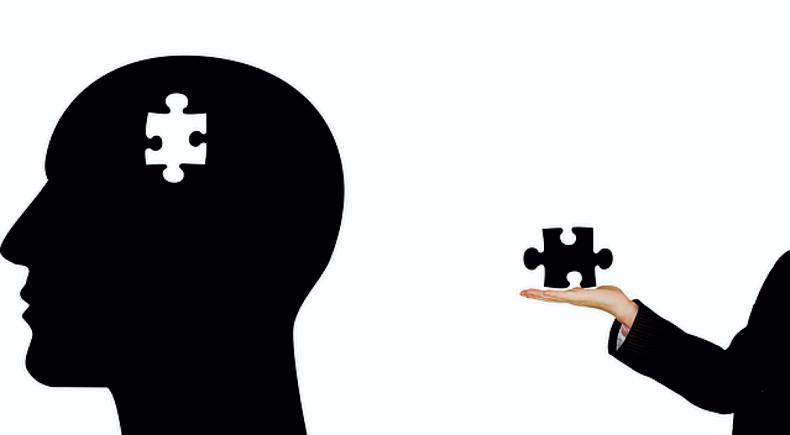CONTRARY to popular belief, most mental health problems are neither longstanding nor permanent. Mental health difficulties are typically episodic and they are most often transient. While they usually arise in the context of significant stress, it seems that for some people one of these stresses may simply be the arrival of the autumn and winter months.
Seasonal Affective Disorder (or SAD for short) is a recurring depressive disorder also known as ‘the winter blues’. SAD is a problem of recurring episodic depression characteristically associated with the arrival of the autumn/winter months but typically relieved with the onset of spring.
Estimates vary but there is no doubt that SAD is a common problem. Significant winter depressions are thought to occur in three out of every 100 of the population. Twice as many women as men experience SAD and the most common onset ages are in the early 20s and 30s.
Episodes of SAD are typically depressing and they can last many weeks, with a person experiencing many common depressive features, such as a reduction in mood or energy, a loss of joy or concentration, and also a loss of appetite or even over-eating.
These features may be seen with any depression, but with SAD these depressive symptoms arise either out of the blue or in addition to other symptoms already being experienced by someone with anxiety or depression. In other words, SAD may be a recurring, isolated and discrete problem or an additional and coexisting one.
There is no known cause for SAD but theories about causes are plentiful. These are generally psychological and/or social, but in the case of SAD it seems likely that the reduction in the number of daylight hours has something to do with its onset. A chemical messenger in the brain, melatonin, fluctuates with exposure to light. This is in an area of the brain known to be associated with the regulation of mood, appetite and energy.
Melatonin
However fluctuations in melatonin induced by darkness do not entirely explain things. The subjective influence of other seasonal stresses is probably also a factor.
Mental health problems like SAD are not on the increase. It may simply be that we are more aware of them. Still, overall levels of mental health distress do appear to be increasing in other areas. The trends are worrying. Recent evidence has revealed a near four-fold increase in certain stress-related, common mental health disorders. There has been a substantial increase in post-traumatic stress disorder, particularly in young women, and also a large increase in self-harm and suicidal behaviours.
Seasonal Depressive Disorders do not appear to be precipitated by the stresses or traumas of life. SAD is a form of mental suffering that is very challenging. This tells us something important about mental health and wellbeing. There is no single cause of mental health difficulty (just as there is no single definition of mental wellbeing). We are human and so all these things have psychological, biological, social and spiritual aspects to them, and probably lots more besides.
So what can we do about SAD? Well, as ever, it is always better to start by talking about it. Share the problem. A problem shared is a problem halved as they say. Nothing is resolved in secret. Talk to a loved one, a family friend, a partner, a family physician, but most of all tell someone. These conversations can give great relief.
Practical steps
Mild degrees of distressing symptoms can also be relieved by taking small practical steps. These include fostering greater self-care, taking more exercise, eating better and seeking out greater sources of positive life-affirming company. In that way SAD may be like any other mild depression.
More severe cases where symptoms are persistent and pervasive, and where low mood is associated with multiple consequences such as impaired concentration, loss of weight or suicidal thoughts, may indicate a need for more active treatment.
The melatonin theory has led to the development of light as a therapy. It is possible to buy light boxes that emit constant beams of northern light (that is to say these boxes emit specific wave lengths without potential harmful UV bands). These are available commercially and for some they are very helpful. Most of those who benefit do so within a week of using about 30 minutes or so of therapy, usually in the morning and every day. Some manufacturers offer the light box for a trial period and it’s wise to take up such an offer.
Other people benefit from Cognitive Behaviour Therapy (CBT). This helps to reframe the SAD experience and helps people to re-engage with the world and the future. Others may require medication and, as with any depressive episode, it’s best to discuss this with your doctor and to consider all the benefits and the risks.
Whatever approach is taken, whether it is a single measure or a combination, it is essential to persist until recovery is achieved and as long as it takes to prevent relapse.
Winter months
Many of us fear the arrival of the winter months. This is understandable given the return of the long dark evenings and the hazards of inclement weather. Let’s hope that this year we will all take time to soothe ourselves and to re-build our reserves of wellbeing.
Of course there is a natural inclination to hibernate at these times, but this year we might take a wellness approach. We might look beyond ourselves and to each other for wellness. Perhaps this year we will make winter a season to be collective and to be warm, joining together within our neighbourhoods and families, whatever their size or shape, to enjoy each other’s company where possible, and safely.
Finally, spare a thought for those with less resources, those without a secure home and without sustained companionship, for those whose resilience has been dented by loss of friendship or positive values. Let us speak up for mental wellbeing wherever we can. Remember mental wellbeing is for everyone, especially this winter.
If you would like more information or support on this or any other mental health issue why not call the support line at St. Patrick’s Mental Health Services on (01) 249 3333 or their youth support line on (01) 2493 555.


 This is a subscriber-only article
This is a subscriber-only article
 It looks like you're browsing in private mode
It looks like you're browsing in private mode









SHARING OPTIONS: